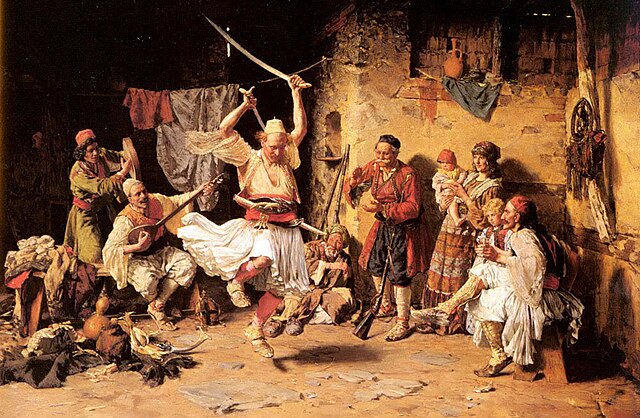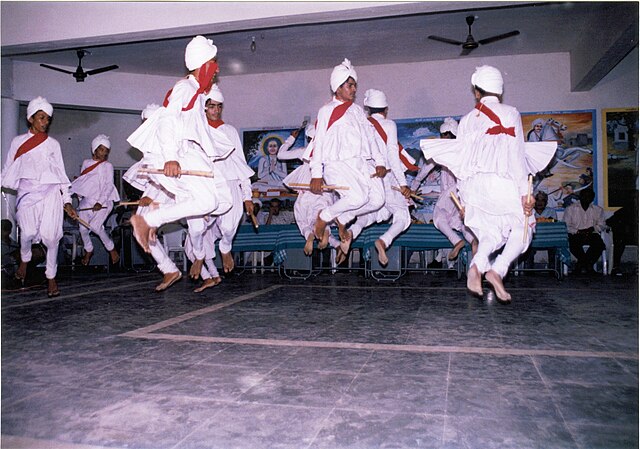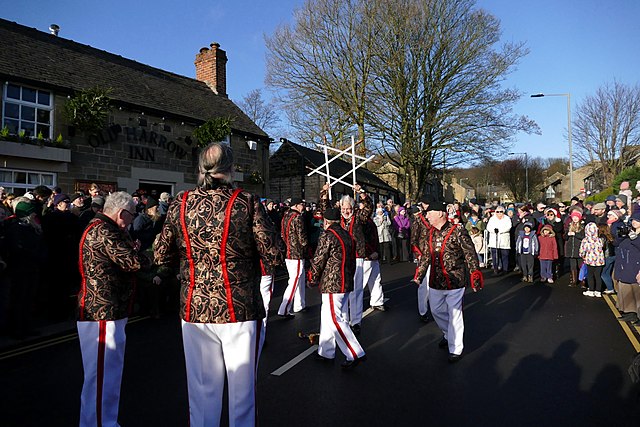Weapon dances incorporating swords or similar weapons are recorded throughout world history. There are various traditions of solo and mock-battle (Pyrrhic) sword dances in Africa, Asia and Europe. Some traditions use sticks or clubs in place of bladed weapons, while most modern performers employ dulled replications to avoid injury.
Georgian mock-battle ensemble with short swords and bucklers
The Sword Dance by Paul Joanovitch
Mer Dandiya, a sword dance performed by the communities of Saurashtra
Lady Gongsun of the Tang dynasty, who was known for her elegant sword dancing, as depicted in Gathering Gems of Beauty (畫麗珠萃秀)
The weapon dance employs weapons—or stylized versions of weapons—traditionally used in combat in order to simulate, recall, or reenact combat or the moves of combat in the form of dance, usually for some ceremonial purpose. Such dancing is quite common to folk ritual on many parts of the world. Weapon dancing is certainly ancient; among the earliest historical references we have are those that refer to the pyrrhichios, a weapon dance in ancient Sparta, in which the dance was used as a kind of ritual training for battle.
Boxing Day 2016 – The Grenoside Sword Dance Captain holds aloft the sword lock before placing it around his neck
Dancers from Markina, Basque Country.
Two Māori men wielding taiaha.
Capoeira or the Dance of War by Johann Moritz Rugendas, 1825, published 1835








